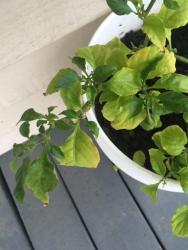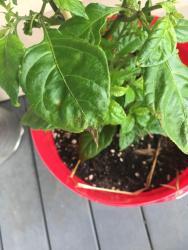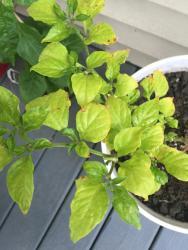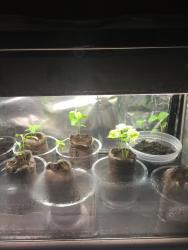Some people have used an old "anti-static dryer sheet" to keep soil from dribbling out of drain holes. I would rather use smaller holes! Or maybe run some loose, open wicking material into the holes, partly blocking the soil, partly wicking water out or in, and partly leaving some space open for air diffusion.
Also, if the only holes are UNDER the pot, air may have a hard time getting in those holes. Hence some holes should probably stick out the side, to let air in and C)2 out.
Elaine said:
>> I'd advise you to start by using only potting soil, mixed with some extra Perlite (an expanded rock product, available in bags at the garden center). This will help keep the mix open enough to allow drainage and air to the roots.
Yes! Garden soil in most yards has a lot of clay: death to potted plants. Starting with an open, soilless mix is a great idea if it's affordable.
If not, adding "chunky stuff" to an affordable soilless mix opens it up to let air in. Coarse Perlite happens to be the most popular "chunky thing" that gardeners use. Screened crushed stone (grit) is just as good, and "sharper", but heavier.
Personally, I think Perlite always makes a container look like someone is growing pot.
I like screened pine bark for "chunky stuff". It's cheaper than Perlite and holds just a little water. It's easier to re-wet than peat. If you have a couple of kinds of hardware cloth, you can screen bark to get any size particles you want, from dust and fibers to shreds, to chips, to chunks.
And the starting material is very cheap (fine bark nuggets or medium mulch if it is clean and DRY).
http://garden.org/ideas/view/R...



